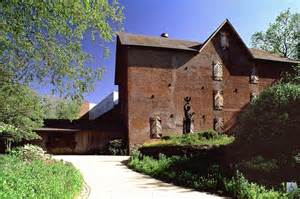May 6 2017 - May 29 2017
Brandywine River Museum of Art
Chadds Ford, PA
Drawn from the collection of Wilbur Chocolate, of Lititz, Pennsylvania, Sipped and Savored showcases the art of consuming chocolate in its many forms.
While chocolate is a common candy treat of the twenty-first century, European connoisseurs went to great lengths to enjoy the “food of the gods” beginning in the seventeenth century. Thick chocolate beverages were expertly mixed in ceramic pitchers and pots made just for the purpose. These elegant vessels were manufactured in the celebrated potteries of Europe and Asia into the twentieth century. Advancements in the processing of chocolate allowed for it to be molded into shapes in the nineteenth century. Elaborate metal molds were manufactured to allow chocolatiers to craft ornate chocolate sculptures, both large and small, in any number of fanciful shapes. Moving into the twentieth century, chocolate was promoted as a nourishing part of a child’s diet, and cocoa products became staples in every kitchen.
Credit: Exhibition overview from museum website
Whether or not you go, The True History of Chocolate offers “A beautifully written . . . and illustrated history of the Food of the Gods, from the Olmecs to present-day developments.”―Chocolatier
This delightful tale of one of the world’s favorite foods draws on botany, archaeology, and culinary history to present a complete and accurate history of chocolate.
It begins some 4,000 years ago in the jungles of Mexico and Central America with the chocolate tree, Theobroma Cacao, and the complex processes necessary to transform its bitter seeds into what is now known as chocolate. This was centuries before chocolate was consumed in generally unsweetened liquid form and used as currency by the Maya and the Aztecs after them. The Spanish conquest of Central America introduced chocolate to Europe, where it first became the drink of kings and aristocrats and then was popularized in coffeehouses. Industrialization in the nineteenth and twentieth centuries made chocolate available to all, and now, in our own time, it has become once again a luxury item.
The third edition includes new photographs and revisions throughout that reflect the latest scholarship. A new final chapter on a Guatemalan chocolate producer, located within the Pacific coastal area where chocolate was first invented, brings the volume up-to-date.
Exhibition Venues & Dates
May 6 2017 - May 29 2017
Brandywine River Museum of Art
Chadds Ford, PA

